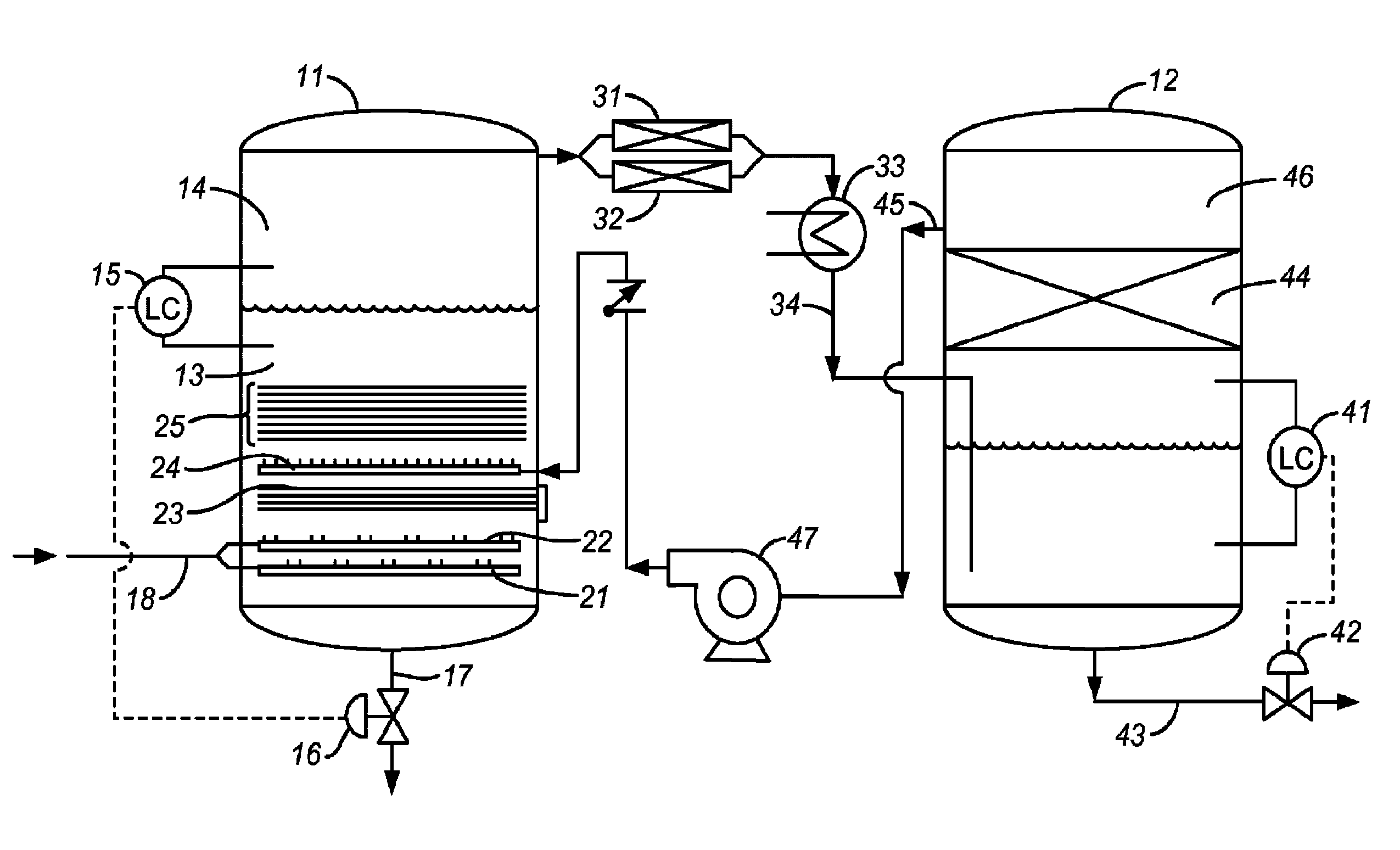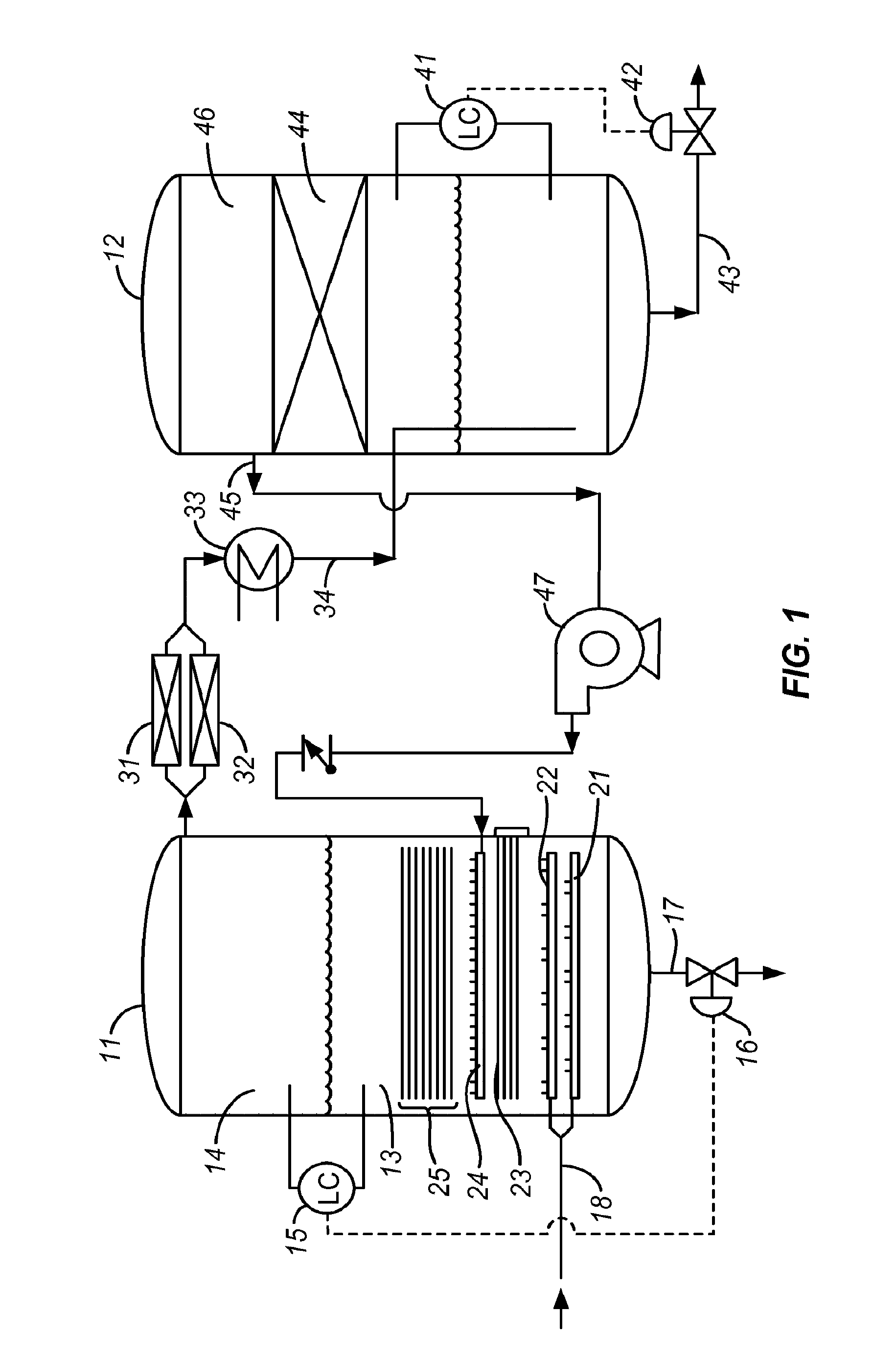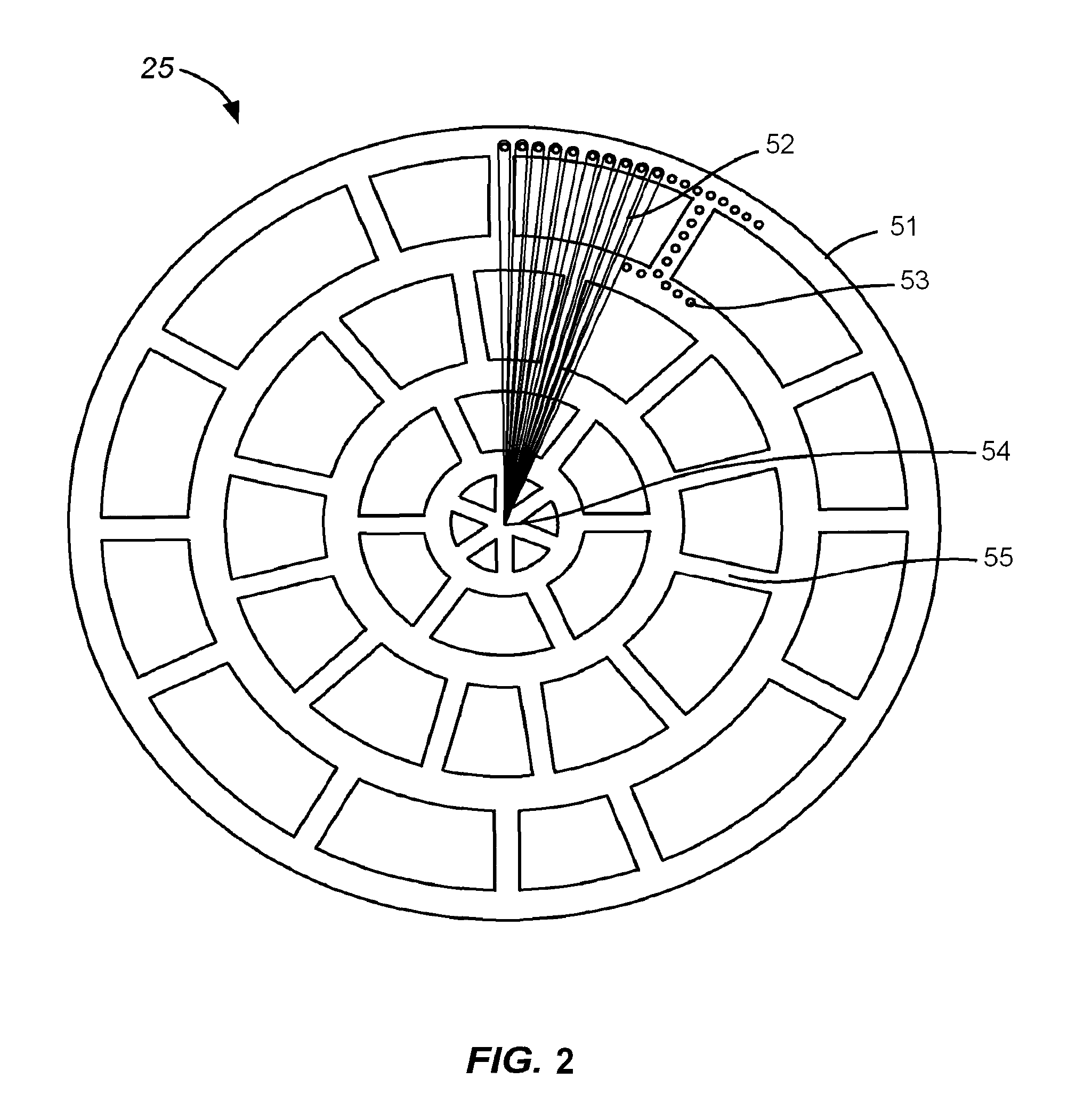Liquid hydrocarbon fuel from methane assisted by spontaneously generated voltage
a technology of liquid hydrocarbon fuel and methane, which is applied in the direction of gaseous fuel, fuel, chemistry apparatus and processes, etc., can solve the problem that the rate at which the product fuel is produced far exceeds any rate of depletion of the liquid reaction medium
- Summary
- Abstract
- Description
- Claims
- Application Information
AI Technical Summary
Benefits of technology
Problems solved by technology
Method used
Image
Examples
example 1
[0025]This example illustrates the present invention as applied to natural gas as the methane-containing gas and diesel oil as the liquid petroleum fraction. The equipment used was as shown in FIG. 1, in which the reaction vessel was a tank with a volumetric capacity of 1,000 gallons (3,785 liters) and a diameter of 6.5 feet (2 meters). The tank was initially charged with 600 gallons (2,270 liters) of diesel fuel maintained at a temperature of 290° F. (143° C.) and a pressure of 6 psig (143 kPa), and natural gas was bubbled through the reactor at a rate of 20,000 SCFH. The catalyst grids consisted of nickel wire, tungsten wire, cobalt wire (an alloy containing approximately 50% cobalt, 10% nickel, 20% chromium, 15% tungsten, 1.5% manganese, and 2.5% iron), and aluminum wire over a gray iron frame. Once fully started, the reactor produced liquid product at a rate of 200 gallons per hour (760 liters per hour), and two gallons of product for every gallon of reaction medium depleted. Al...
example 2
[0031]This example provides the results of emissions tests on two test fuels manufactured in accordance with the present invention and compares these results with results obtained on commercially available No. 2 Ultra Low Sulfur Diesel (ULSD) fuel, all tests conducted in heavy-duty on-road diesel engines using the EPA Transient Cycle Heavy-Duty Test Protocol. The two test fuels were manufactured under the same conditions and in the same equipment as that of Example 1, with kerosene as the liquid petroleum faction in the first test fuel and No. 2 ULSD as the liquid petroleum faction in the second test fuel, and natural gas (95% methane) as the methane-containing gas for both.
[0032]The heavy duty test engine used in the tests was a 1990 model year Caterpillar diesel engine, Model No. 3406B. The test protocol is one that is currently used for emission testing of heavy-duty on-road engines in the United States, pursuant to 40 CFR §86.1333. The test begins with a cold start after parking...
PUM
| Property | Measurement | Unit |
|---|---|---|
| temperature | aaaaa | aaaaa |
| electrical resistivity | aaaaa | aaaaa |
| temperature | aaaaa | aaaaa |
Abstract
Description
Claims
Application Information
 Login to View More
Login to View More - R&D
- Intellectual Property
- Life Sciences
- Materials
- Tech Scout
- Unparalleled Data Quality
- Higher Quality Content
- 60% Fewer Hallucinations
Browse by: Latest US Patents, China's latest patents, Technical Efficacy Thesaurus, Application Domain, Technology Topic, Popular Technical Reports.
© 2025 PatSnap. All rights reserved.Legal|Privacy policy|Modern Slavery Act Transparency Statement|Sitemap|About US| Contact US: help@patsnap.com



